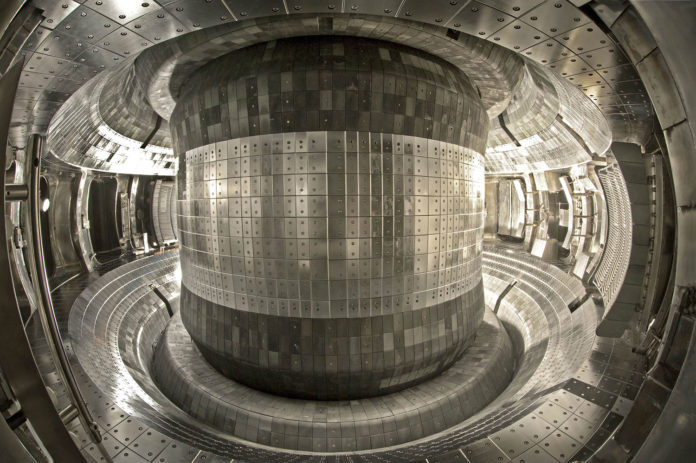China’s Experimental Advanced Superconducting Tokamak (EAST) fusion reactor, or “artificial sun,” has set a new world record by maintaining 70 million degrees Celsius (126 million °F) for 1,056 seconds – more than 17 minutes.
EAST already scored a previous record in May 2021, sustaining a plasma temperature of 120 million degrees Celsius for 101 seconds. The latest one, set on December 30, marks the longest-running duration for the EAST fusion energy reactor. The testing was conducted by the Institute of Plasma Physics under the Chinese Academy of Sciences (ASIPP).
EAST reactor is one of the several nuclear fusion experiments around the globe designed to mimic the natural nuclear fusion process on the Sun and stars. These fusion reactors aim to heat up hydrogen atoms – specifically, deuterium and tritium isotopes – to a point where they begin smashing together, fusing and releasing massive amounts of energy that can both be harvested and sustain the reaction as additional hydrogen atoms are fed in.
The tokamak reactor uses a powerful magnetic field to confine the hydrogen isotopes into a spherical shape, as they are heated by microwaves into a plasma to produce fusion. Plasma is produced when the atoms in a gas become ionized. It is a superheated matter so hot that the electrons are ripped away from the atoms, forming an ionized gas.
Fusion power plants are set to reduce greenhouse gas emissions from the power-generation sector, which is one of the major sources of these emissions globally. It could provide enough energy to end the world’s reliance on fossil fuels and eventually combat climate change by replacing such energy sources that emit greenhouse gases.
Other nuclear fusion experiments include MIT’s SPARC tokamak and South Korea’s KSTAR. The EAST experiment has reached several key milestones towards viable nuclear fusion that includes achieving a 1-million-ampere current and producing a 1,000-second duration 100-million-degree temperature. Now, the final mission for the tokamak is to reach all the targets in one try, reported Xinhua.
